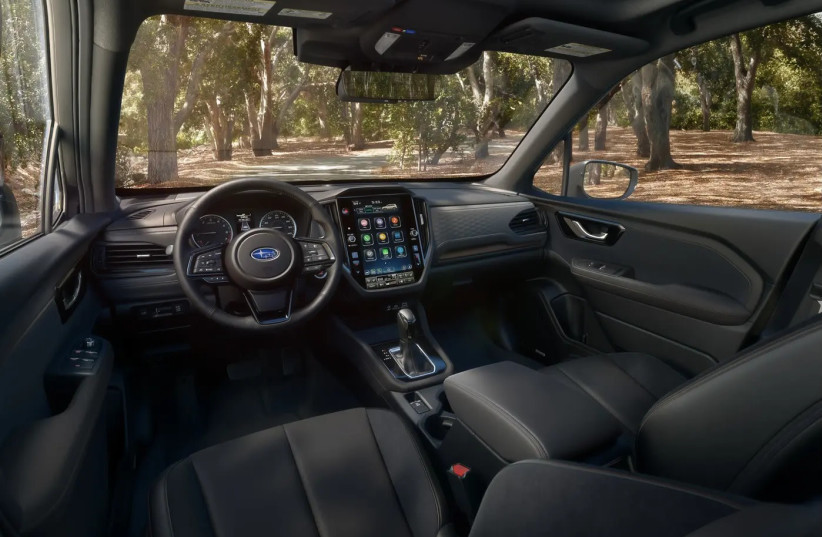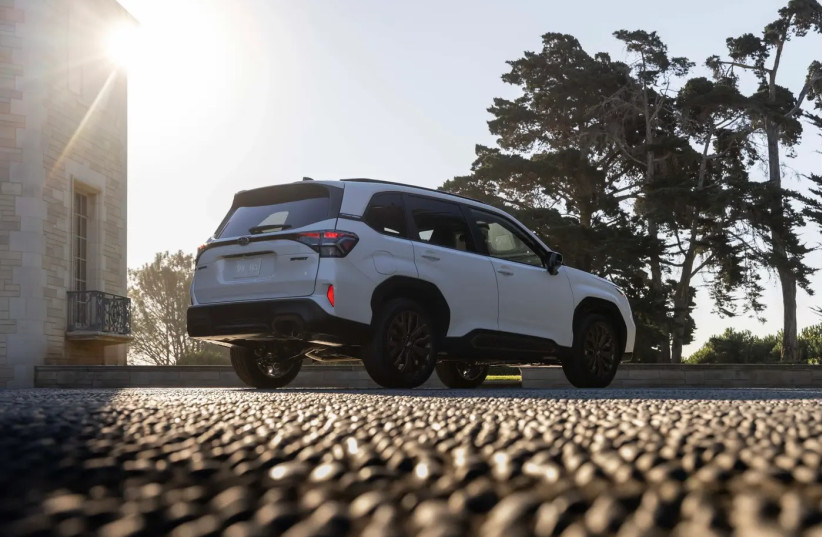There are not many brands with such a significant gap between their general perception in Israel and their standing in the world as a whole. As the manufacturer that defined "the Israeli car" since the late 1970s and for two decades thereafter, it has indeed garnered a reputation for being a reliable and durable vehicle, but also somewhat populist, especially not particularly innovative.
However, around the world, this small manufacturer has made a name for itself due to a long tradition of building cars that were indeed durable and reliable, but also with expertise in dual propulsion. One of its most significant growth engines since it was first introduced in 1997 was the Forester. With a combination of all those features along with unmatched utility and off-road capabilities, ones that over the years even those who were once considered its competitors gave up on.
Now, with the introduction of the sixth-generation Forester in November 2023, it intends to continue with the "if it ain't broke, don't fix it" approach of this model. The base remains the same SGP platform (Subaru global platform) that it has been using in almost all its models since 2016, but the chassis itself has been honed in the current generation with the use of new welding and bonding techniques that also save weight.
In terms of dimensions, the new generation with a length of 4.66 meters, width of 1.83, height of 1.73, and a wheelbase of 2.67 meters shows very moderate growth in dimensions, an addition of only 2 cm in length, while the other measurements remained unchanged.
Also, the cargo compartment volume of 779 liters (in the American measurement system that measures volume up to the roof height and not just up to the seat height) is not significantly different from that of the current generation. The approach angle is now 19 degrees (20 on the way out) and the departure angle remains the same - 24.6 degrees. Its generous ground clearance of 22 cm remains unchanged.
Along with the platform and dimensions, the 2.5-liter boxer engine continues in the current generation. Here it loses two horses and stands at 180 horsepower, and the torque improves slightly to 24.6 kgm (24.3 in the outgoing generation) but they arrive lower at 3,700 rpm instead of 4,400 rpm. The performance is also similar, with 9.4 seconds to 100 km/h (9.3 in the past) and a maximum of 204 km/h (207 in the past).
The continuously variable transmission also continues with him with "shift ratios" programmed for a more natural feel. Here it is with 8 instead of 7 in the outgoing generation. Also, fuel consumption, at least the declared one, is not very different with 12.5 km per liter compared to 12.2 in the outgoing generation.
According to reports in the US, a hybrid version will also be added to the selection next year.
The X MODE terrain driving control also continues, but according to the manufacturer's claim, it has received a new calibration that includes shorter response times for identifying and handling loss of traction on terrain.
In the passenger compartment, the list of changes and innovations is more significant. It aligns with the appearance that the Crosstrek (Subaru XV in the past) has already received, including, among other things, an 11.6-inch vertical screen, integration with Android and Apple devices, wireless charging for mobile phones, USB ports for the rear seats as well as air conditioning outlets, an electric tailgate, heated front seats as standard in all trim levels and rear ones in high trim levels, electric adjustment for the seats is also available in high trim levels, and preserved ventilation for the highest trim level.
Subaru's EyeSight safety systems continue to use cameras without radar, this time with three of them. The system includes automatic braking, adaptive cruise control, lane departure correction, vehicle detection in "blind spot", rear cross-traffic alert, and braking. In the "Executive" trim level, there is also a 360-degree display.
The bad news is that the Forester continues to rise in price, and unfortunately, there will not be a base version for less than NIS 200,000.
With the arrival of the new generation, the finishing levels of the model also change. The entry version called Z, offered at a price of NIS 170,000, is no longer available, while the X and XS finishing levels have changed names. The only finishing level left is "Sport".
The new names are "Premium", which will be the cheapest at NIS 206,000, followed by "Sport" at NIS 219,000, "Limited" at NIS 235,000, and "Limited Plus" at NIS 250,000.



